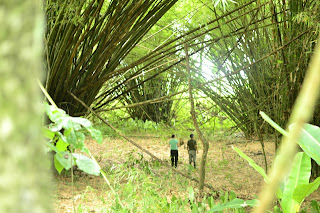No-one can deny the pleasing simplicity of a bicycle,
The wheel alone revolutionised society.
But in taking two, the bicycle has given it grace,
Throw in a slender seat post and a fine handlebar,
And now you have an instrument ready to inspire.
Use it as you will; for dawdling to the shops or a Sunday excursion,
For commuting to the office, or a lifetime of adventure.
Whilst you conform to this stereotype, you are not just any bike;
You are my knight in shining armour and my adolescent daughter,
You are a daily protagonist in my unrelenting journey.
I use you like a pack-mule (‘yes, your bum does look big in this’)
Whilst at this, at least, you do not moan,
I see you sneer when I can barely lift you,
You lean in and make yourself all heavy,
I grunt and groan just trying to shift you.
But when you're feeling frisky,
You fuss and screech, demanding that I love you more,
And that is probably a fair request.
For its true that when I turn you over, strip you down and leave you all exposed
If I can't find a simple fix,
it's not long before I'm declaring you ‘done for’, ‘broken’, ‘a pile of S!”t’
When all you really need is basic expertise,
Some attention and redressing, in short, patience!
And when we are working well, foot in pedal,
I couldn't thank you more for the pleasure
You magnify my every stroke with such ease
Convincing me that this is the best partnership in town.
And then on to the next town we go,
Nothing disrupting our flow
Through these growing pains we become closer
You become an extension of my body
When a shard pierced your tyre I winced in pain,
As if I were myself impaled. Your wheel, my flesh.
And when I regularly flag, you urge me on, using your momentum to will me forward
Promising me a pace that is unattainable without your elegant two wheels at work.
But sometimes we don't agree
I'm over here, working hard, and I can't feel you here with me
A rising hill demands both of our attention
But you don't seem to be pulling your weight,
I ask you nicely to change gear and help me out,
And yes, perhaps it is an over reaction when I shout,
But it's really steep and you are damn heavy
My legs are tired and the sun is strong,
So please just play nicely and help me along.
We have come so far together, but on we must go.
And after this, who knows what we might do
But I wouldn't rest on my laurels if I were you
For in truth, there's always the threat of a lighter faster model.
 |
| Hanging out with your best friend |
 |
| 'Ouch!' (How did that not cause a puncture!!) |
 |
| In our flow |
 |
| x2 |
 |
| Not working together |
 |
Me pushing you
|


















































